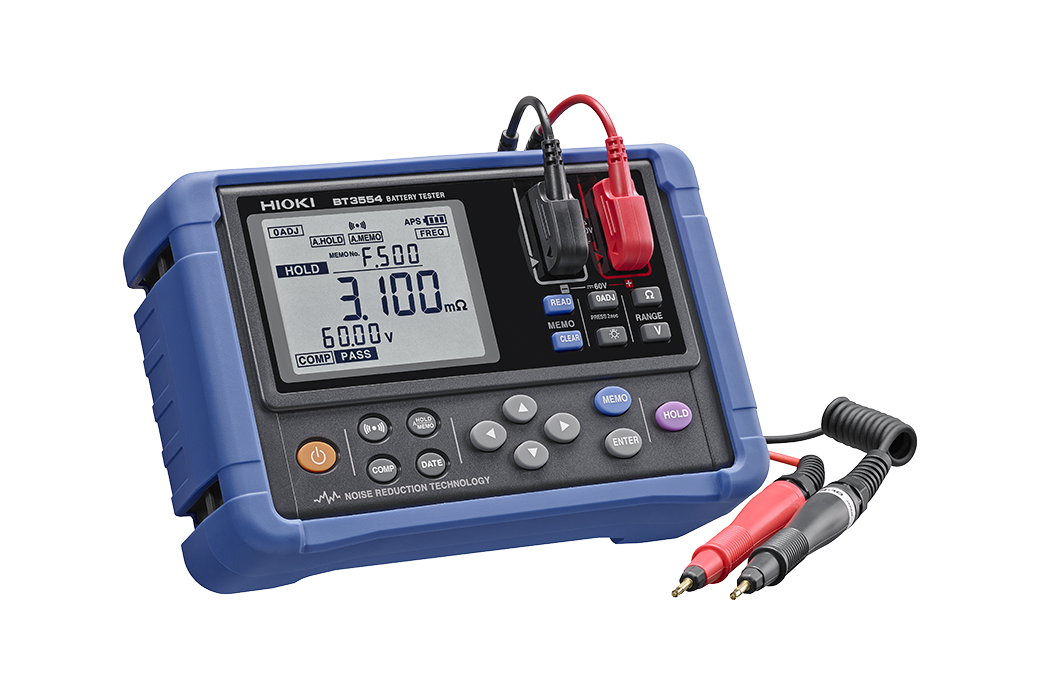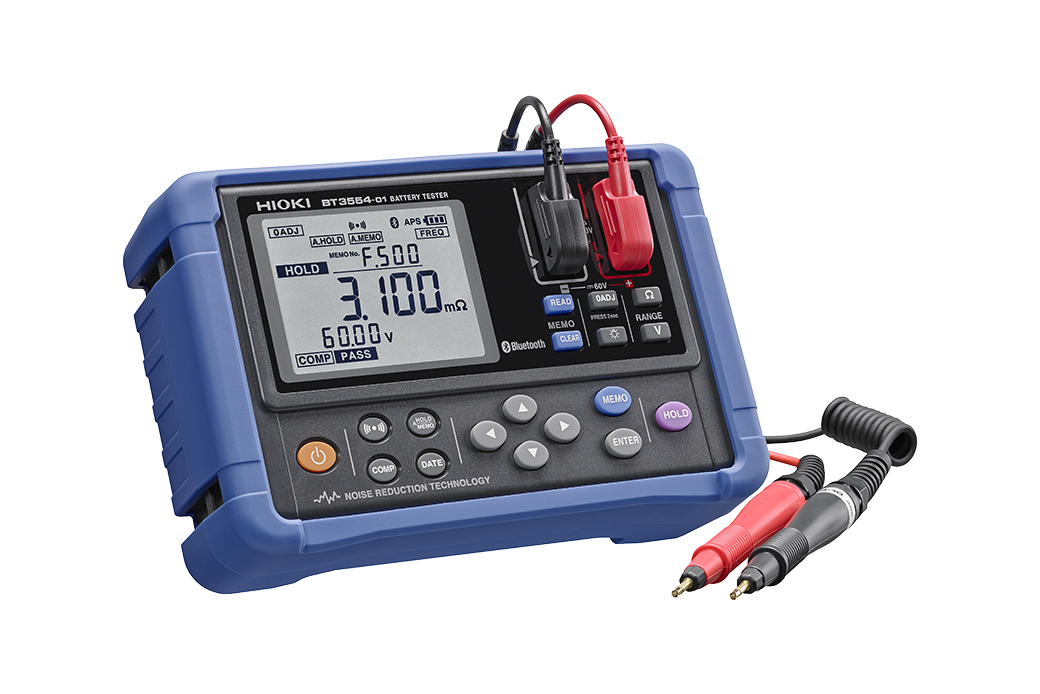Test the Deterioration of Stationary Lead-acid Batteries
Quickly test deterioration of sealed lead-acid batteries
Highlights
- The deterioration state of batteries can be determined by measuring the internal resistance and voltage between the terminals of sealed lead-acid batteries.
- Since the measurement data can be stored in the memory of the instrument, the data of multiple batteries installed in a cubicle can be easily saved to a PC.
- Since the trends of battery data can be observed, the state of batteries can be determined accurately.
- Also measure batteries while they are being charged (on a live line).
1. Bring the probe into contact with the battery terminals.
2. The internal resistance and voltage between the terminals (up to 60 V) of batteries can be measured simultaneously.
3. Measure each of the cells in the cubicle and record the measurement data to the internal memory of the main unit.
4. Perform this kind of maintenance periodically.
5. Since the internal resistance of sealed lead-acid batteries tends to increase sharply as deterioration progresses (1.5- to 2-fold increase from the initial value), the state of batteries can be determined by monitoring the trends in the data.
- The acceptance and rejection threshold varies depending on the manufacturer, type, and capacity of batteries. The internal resistance and terminal voltage of a new or a good battery need to be measured in advance.
- Changes in the internal resistance of open (liquid) lead-acid batteries and alkaline batteries are less than those of sealed lead-acid batteries (valve-regulated lead-acid (VRLA) batteries such as the MSE and HSE series), so it may be difficult to determine the deterioration state of these batteries.
Products used
BATTERY HiTESTER 3554
The successor product of BATTERY HiTESTER 3554 is BATTERY TESTER BT3554.


